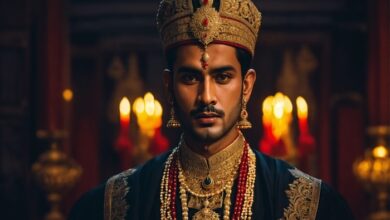Modi Age: A Look at India’s Prime Minister and his Legacy

Narendra Damodardas Modi, the 14th Prime Minister of India, has been a towering figure in Indian politics for over two decades. His rise to power from humble beginnings to leading the world’s largest democracy is a testament to his political acumen and captivating persona. At the age of 73, Modi continues to be a central figure in Indian and global affairs, sparking debates and generating discussions around his leadership and its impact on the nation.
Early Life and Political Rise:
Born in 1950 in a small town in Gujarat, Modi’s early life was marked by modest beginnings. He left home at a young age, joining the Rashtriya Swayamsevak Sangh (RSS), a Hindu nationalist organization that deeply influenced his political ideology. After working his way up the ranks of the RSS and the Bharatiya Janata Party (BJP), he rose to prominence as the Chief Minister of Gujarat in 2001.
During his tenure as Chief Minister, Modi implemented aggressive economic reforms and infrastructure projects, transforming Gujarat into a major economic hub. However, his administration also faced criticism for its handling of the 2002 Gujarat riots, which left over 1000 people dead, mostly Muslims. Despite the controversy, his popularity surged nationally, culminating in his historic election as Prime Minister in 2014.
Focus on Development and Hindu Nationalism:
Since becoming Prime Minister, Modi has focused on ambitious development projects, aiming to propel India into a global economic powerhouse. He has launched various initiatives, including “Make in India,” “Digital India,” and “Swachh Bharat Abhiyan,” aimed at boosting manufacturing, digital literacy, and sanitation. These initiatives have yielded mixed results, with some highlighting economic growth and others pointing to continued poverty and inequality.
Alongside his development agenda, Modi has embraced Hindu nationalist ideology, promoting a vision of India as a Hindu nation. This has led to increased polarization and tensions between Hindus and other religious communities, particularly Muslims. Critics argue that Modi’s policies and rhetoric have emboldened Hindu nationalist groups and undermined the country’s secular fabric.
International Relations and Global Image:
Modi has sought to enhance India’s standing on the world stage, forging closer ties with major powers like the United States and Japan. He has also taken a proactive role in regional affairs, promoting India as a leader in South Asia and the Indo-Pacific region. However, his policies towards Pakistan and China remain contentious, with ongoing border disputes and regional tensions.
Despite his successes on the global stage, Modi’s international image remains complex. While some admire his leadership and India’s economic growth under his rule, others criticize his human rights record and the erosion of democratic institutions in India.
Controversy and Criticism:
Modi’s leadership has been marked by various controversies, including accusations of corruption, cronyism, and attacks on freedom of speech and the press. The government’s handling of the COVID-19 pandemic has also drawn criticism, with accusations of mismanagement and inadequate support for the vulnerable sections of society.
Despite these criticisms, Modi remains a popular figure among many Indians, particularly in rural areas and among the Hindu majority. His supporters praise his strong leadership, economic reforms, and promotion of Indian culture and values.
Conclusion:
Narendra Modi’s legacy as India’s Prime Minister is complex and multifaceted. While he has undoubtedly overseen economic progress and enhanced India’s global standing, his policies and rhetoric have also fueled social and religious tensions, raising concerns about the future of India’s democracy and secularism. As Modi enters the twilight of his political career, the debate over his legacy will continue for years to come.
This article has explored the various facets of Modi’s career, highlighting his achievements, controversies, and impact on India and the world. It is crucial to analyze his leadership from multiple perspectives to understand the complexities of his legacy and its lasting implications for Indian society.



